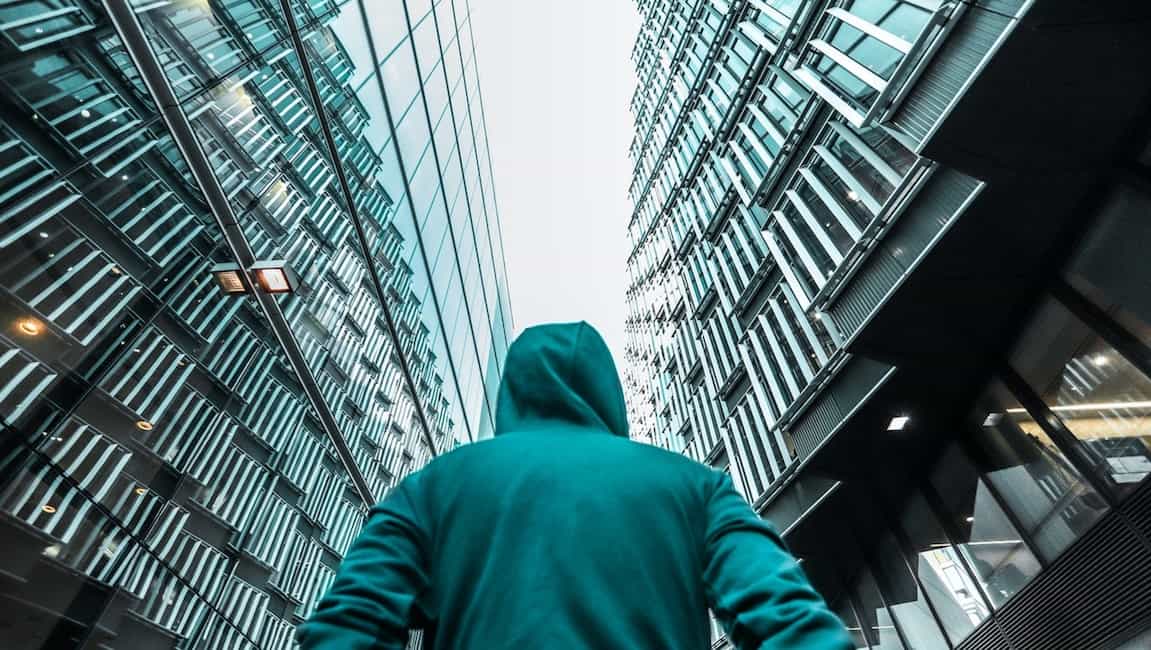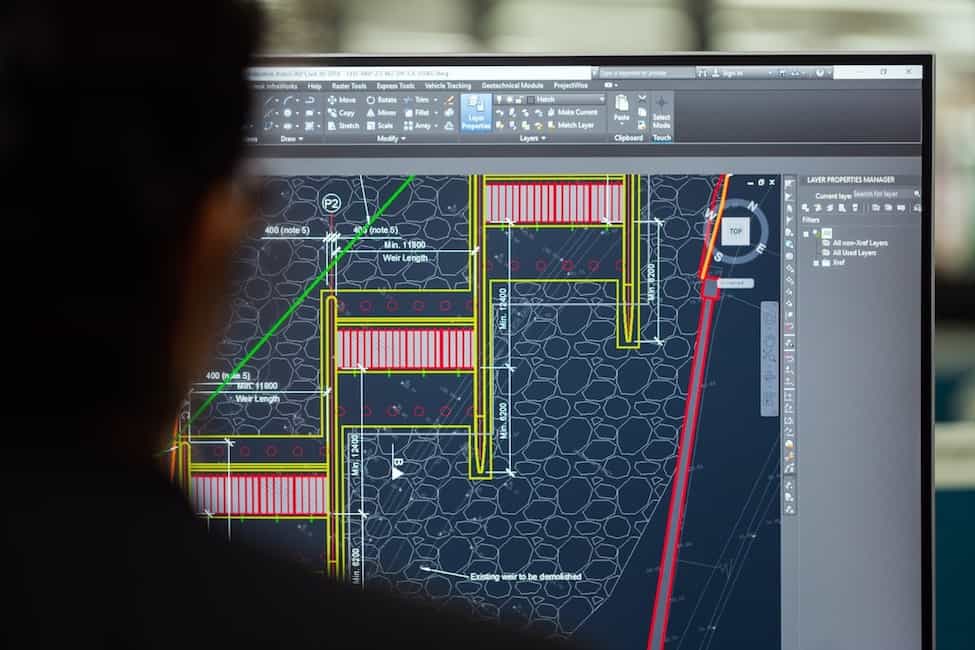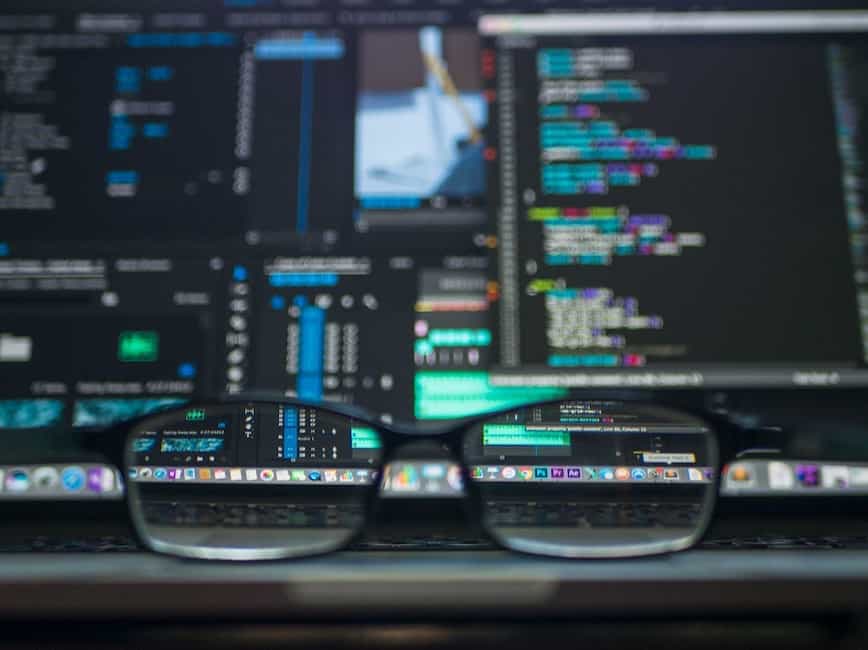The idea behind the birth of digital twins has been around 2002. Thanks to the Internet of Things (IoT) that this technology trend has become cost-effective to implement. Writing for Forbes, Bernard Marr refers to digital twin as “a virtual model of a process, product or service.”
This pairing of the virtual and the physical worlds allows for the analysis of data and monitoring of systems to address problems before they occur, seize new opportunities, and even plan for the future by using simulations.

When it comes to construction, digital twins technology allows developers to manage, visualize, analyze, and forecast information to create modern smart cities. Cityzenith recently published a white paper that surveys the impact of digital twins during the COVID-19 crisis and after the pandemic. Can professionals track the virus as people go back to urban centers and workplaces? For this to happen, landlords, building managers, and property management companies should understand each data point’s effects. Let’s dig into the details of the Cityzenith’s report.
The Rise of the Digital Twin Phenomenon
The digital twin industry has grown considerably over the past two years. In 2019, markets and researchers reported that the industry had made almost four billion US dollars in total revenue, with analysts predicting the figure to rise to USD 36 billion by 2025. For three consecutive years, the adoption of a digital twin has landed among the top ten new tech trends. We cannot deny that the market is expanding at a high rate.
This report reviews the digital twin trends from the outlook of both short and long-term practitioners. It also looks at how the global pandemic will affect this trend and to what extent. Although COVID-19 is likely to slow several businesses, its effects on digital twin industry will be tremendous, such as:
- Hasten the implementation of digital twin technologies to help countries to prepare for similar crises in the future.
- Encourage the adoption of digital twin technology at a large scale over several sectors when economics arises from recession.
If you have been keen on the digital twin industry’s progress, you may have noticed that the focus is changing from concept-oriented towards full developments. Also, sectors that weren’t on board with the idea are slowly accepting them.
The first focus of this phenomenon was in the manufacturing industry, where it enabled plant operators to organize, manage, and improve production capacity. Today, across several sectors, such as smart cities, energy, real estate, infrastructure, intelligent districts, retails, and smart campuses, the concept is widely embraced.
As interest in digital twin tech continues to grow exponentially, more people are interested in understanding what it is. Six countries now have a digital twin program, like the United States and the United Kingdom. The AIA is also developing digital twin guidelines. The fan base is not just in the public sector, but the private space as well. A new mega smart city under construction in Saudi Arabia is considering using digital twin technology, as the developer wants to test 19 cases in the next two years.
The real estate sector is also noticing this emerging phenomenon, with presentations of digital twin taking the lead in real estate webinars. This conversation is slowly taking over boardrooms as more companies seek to route for these solutions.
What Is a Digital Twin?
The original definition is inclined towards the construction industry. It states that the digital twin is a virtual copy of a steel building linked to the data in and around them. It offers quality value at varying phases in the lifecycle of a building, from design to demolition. Engineers, building owners, architects, planners, managers, and developers can use the digital twin concept in many ways. For instance, the phenomenon may be used to analyze climate change impact, surveying financial ROI models, and forecasting traffic patterns.
Digital twin is like a single-prism of glass approach that offers users accurate data at the right time for the correct uses. Conventional GIS, CRE, BIM, and CAD tools were developed by experts to help experts. However, digital twin technology was made by experts to help everyone. Any user can be trained in barely a few hours on how to use the applications. Building owners can give their license to building managers, engineering departments, tenants, and facilities managers. When used, the phenomenon has been found to save up to 25 percent in operating costs yearly. Most users started with a one-user package and expanded to multiple-user packages.
How Does Digital Twin Compare To Common Software Tools?

The digital twin is more than a 3D imaging tool. Also, it is not a BIM software tool, and it doesn’t copy the work of a system integrator. A 3D visualization tool can’t be connected with external databases or used for sophisticated simulations. System integrators link edge points to a hub. They have crucial data layer BIM tools that are used for modeling detailed designs and construction phases but not the operation phase. BIM software cannot be linked to digital twins directly since the architecture cannot sustain the mass topping of 3D data or models. However, they can be transformed into digital twins.
SmartWorldPro is a digital twin platform that allows users to export data from traditional software tools into digital twins. The new models are fit for construction BIM models. They are known as simplified 3D asset management models that are inside digital twin applications. You can use these models to design several constructions, including steel buildings.
Read more about “The Future Is Smart Buildings“.
Will Digital Twins Help Manage and Convey Information During the Covid-19 Pandemic?
The launch of SmartWorldPro couldn’t have come at a better time. The events following the Covid-19 pandemic are affecting the world, drastically impacting regular business and government operations. Digital twin technology is not left behind. As we figure out the changes we should implement, some trends seem unavoidable.
Experts predict that after the coronavirus pandemic, the future will focus on contactless interactions and interfaces. Therefore, digital infrastructure should be enhanced, and the use of big data and the internet of things must be encouraged. There is likely to be more reliance on robots. In other words, the focus will be on digitization and virtualization across all industries. Digital twin tech will pave the way for virtualization in the construction industry, such as metal buildings. Online meetings, flexible workspaces, less travel, and more data collection will be the new normal. Robots will do maintenance tasks with minimal manual involvement.
People Will Use Buildings Differently
How people use buildings will change in the long-term. Consider how the coronavirus pandemic has changed how people use structures like steel buildings in Singapore, China, and South Korea. Europe and the United States might see the same changes unfold.
In Asia, new Covid-19 regulations require screening every visitor when entering into a building. The rules have forced commercial buildings to embrace technology, whereby sending the results of the screening to a central hub is a must. The way people come into the offices has changed dramatically and more likely to stay like that for a while as the pandemic continues to batter the world.
Some mobile apps are designed to inform building operators of any infected person within 100 meters or less within the building’s premises. IoT sensors have been installed on streets, and they alert offices when crowds of over a hundred meters have assembled. Some sensors can send automated messages to the groups to ask the people to disband.
Merchants and residents can use open-source geospatial devices to send information about stocks and material supplies. Local hospitals can use the same tool to convey details of the available testing kits and other medical goods. Engineers worldwide should participate in groups like Global Hack to suggest ideas and innovations that can help manage the COVID-19 pandemic.
How Digital Twin Helped Asia to Contain Covid-19
Asian authorities managed to avert the spread of the virus by using a comprehensive digital twin tool that could monitor the infection’s progress in real-time. The software gathered several data points into a few tools that ensured a coordinated rapid response.
The pandemic unraveled a massive shortcoming in many countries. Most governments don’t have shared know-how of primary emergency Responses, software tools, and medical data tools needed to protect people against unexpected calamities.
In some instances, people lacked standard software tools to help manage the crisis. In effect, this has resulted in extreme police interventions and supervised quarantine. Many mobile apps developed in Asia and other continents were released randomly rather than first coordinating with other software developers to ensure their efficiency. As such, citizens were confused, and some didn’t even know that such apps existed.
Reasons Why 3D Digital Twins Will Offer Exceptional Solutions for Covid-19 Crisis

Digital twins provide an interface for mapping, controlling, and minimizing the coronavirus pandemic’s effects. A 3D model-based digital twin of an infected town would help distribute information on a large scale and in real-time.
1. Infinite data correlation capacity
Digital twins can combine several data points to enable accurate model simulations. Artificial intelligent plugins that are controlled by machine languages lessen the time it takes to relay information. An activity that would have taken several weeks and months is done within hours or days. Nothing is as vital as speed when it comes to curbing the spread of this virus. Understanding where it is likely to attack next will give authorities the power to contain it in time.
2. A real-time sharable data platform is vital
A 3D model-based environment developed to manage and send information about the spread of the virus is crucial. The technology is designed to send data the moment it is received, and moves in all directions, like a manufacturing component inside an assembly line.
People catch the infection when they touch infected surfaces, are in close contact with an infected person, or breathe air exhaled by an infected individual. 3D modeling can present these situations well, compared with a 2D model created by a research center at John Hopkins that give inefficient outcome. 2D model can only monitor the spread of the disease but doesn’t offer much value afterward. On the contrary, a 3D digital twin model is scalable and can help governments collect data across cities, counties, and the whole nation.
3. Applying Lessons from Construction Sites in Crisis Management
Just like how digital twin tech-enabled manufacturers can help understand various production factors, the same can help handle the Covid-19 pandemic. Digital twins have a user-friendly interface that the consumers can understand easily. Therefore, it can leverage leaders, businesses, health officials, and citizens to manage a town’s response to a crisis. How?
First, you must map out all the assets and resources, such as hospitals, emergency generators, vehicles, ventilators, ambulances, metal buildings, equipment, and field units. Add them to the digital twin platform so that the people in-charge can locate the resources quickly. That way, service delivery will be optimized as the city continues to run during the quarantine. Achieving all of this is possible without having to shut down an entire economy.
Just like how factories need to know where crucial assets are located for use in emergencies, knowing an infected individual’s location and monitoring their movements is essential. Every sick citizen in an infected city within a digital twin command center needs an online page with a personal ID that transmits real-time data. The system can tell a person’s temperature and location. If the individual meets another person who is likely to be infected, this information should be relayed. Health officials will locate infected people quickly.
A mobile tracking system in China has helped the officials to monitor how the virus is moving by quarantining and self-isolating individuals in the most affected towns. They also warn citizens when they are 50 meters away from an infected person. That is how the nation is managing the spread of Covid-19. A New York Times publication dubbed, “How Will We Know When It Is Time to Open the Nation?,” states that we need a vigorous structure to curb the spread of this virus.



